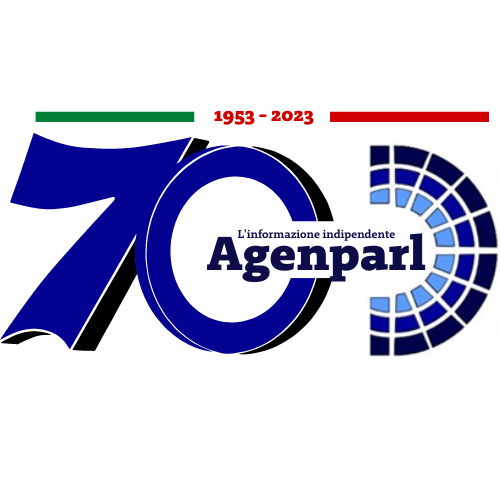 (AGENPARL) - Roma, 14 Luglio 2025
(AGENPARL) - Roma, 14 Luglio 2025(AGENPARL) – Mon 14 July 2025 [cid:9bf8cd2c-065f-4d74-a2ac-0695a5745c92]
Anchored fish aggregating devices take the guesswork out of fishing
Simple technology boosts catches and incomes for Mozambique’s coastal communities
[cid:083884d9-9c39-4aeb-bd1f-f345b7cc91aa]
©FAO/ María Legaristi Royo
The piercingly blue ocean laps softly against pristine beaches in northern Mozambique’s Cabo Delgado province. But its striking beauty belies just how hard it is for local fishers to earn a living from it.
For Mário Sadique, a 52-year-old fisher and father of 12 from the Mecufi coastal district, the sea has long been both a vital source of food and income – and a relentless challenge.
“I fish to provide for my family but sometimes it’s hard to catch any fish or the weather is too bad to go out to sea,” Mário says. “I also do some farming to supplement my family’s food supply and income.”
Divorced and the sole provider for his twelve children – six of whom are aged three to eight and still live with him – Mário shoulders a heavy burden.
His fishing trips used to be arduous. Three times a week, he paddled his traditional canoe for two hours to reach deeper waters where he spent the night fishing for tuna and other deeper water fish, often not returning until the following afternoon. Despite his hard work, the result was often poor catches, partly due to inadequate fishing gear, partly to diminishing fish stocks nearer to shore.
On a bad day, he would sometimes return with barely a kilo of fish, hardly enough to feed his family, let alone sell.
The unpredictable nature of the waters forced him to shift locations constantly, relying on little more than a fisher’s instinct and luck.
A pilot project launched by the Food and Agriculture Organization of the United Nations (FAO) together with Mozambique’s Ministry of Agriculture, Environment and Fisheries installed eight anchored Fish Aggregating Devices (aFADs) for four communities in the province. These mechanisms, consisting of concrete blocks to anchor them and an array of chain, buoys and aggregating materials, attract fish, making them easier to catch.
For the project in Cabo Delgado, the aggregating components of the aFADs are made of sustainable organic materials like coconut fronds and rope. They work because microorganisms or algae stick to the aggregation material. Smaller fish feed on them and in turn these attract larger fish. In tropical environments, the shade aFADs provide attracts fish too.
“The idea of installing aFADs was to enable small-scale fishers to access the abundant tuna stocks offshore, as there is a lot of fishing pressure on the nearshore waters,” says Jon Lansley, a fishery industry officer at FAO.
As part of the project, FAO trained national technicians and fishers in the construction and deployment of anchored FADs. Sixteen fishers also learned new methods to fish around aFADs. Fishers were also supplied with basic gear including lines, hooks and lures.
With financial support from the Norwegian Agency for Development Cooperation (NORAD), the project has resulted in increased catches, higher incomes and less time spent at sea.
Bigger, more dependable catch
The simple yet transformative aFADs have allowed Mário to fish in a stable location, shortened his trips and dramatically increased his catch, which jumped from the range of one to five kilos per trip to an average of around 20 kilos, considerably boosting his income. On a good day, he can earn up to MZN 3 000 (USD 47) from a single outing.
“With the anchored FADs, I finally knew I wouldn’t return home empty-handed,” Mário says.
This newfound stability has enabled Mário to ensure there is food on the table and invest more in his children’s education.
Since the devices were deployed, Mário and more than 100 other fishers who regularly work around the aFADs have reported significantly improved catches, and catch levels remain sustainable because the fishers use small canoes and do not go out every day.
Though challenges like extreme weather, for example Cyclone Chido that hit in December 2024, still exist, fishers are in a better position to bounce back from these shocks.
The mostly large tuna the fishers can now catch are highly valued, especially by restaurants and hotels in the provincial capital, Pemba. This catch contributes to improved economic stability for the fishing community and better nutrition for them.
FAO is preparing to deploy more aFADs and distribute 100 gear kits to local fishers as part of a new project in 2025.
The story and photos can be found here: https://www.fao.org/newsroom/story/anchored-fish-aggregating-devices-take-the-guesswork-out-of-fishing/en
All feature stories can be accessed here: http://www.fao.org/news/stories-archive/en/
Media outlets are welcome to reproduce the article or use the information contained in it, as well as related photos, provided that FAO and the photographers are given credit. A link back to the original story is also appreciated.
FOR MORE INFORMATION
FAO News and Media
Online tools
Photos and Videos: FAO Digital Media Hub
Photos: FAOnews Flickr account
FAO News: Newsroom website
FAO feature and in-depth stories: Stories website
Social Media: @FAOnews
This email was issued by the Media Office at the Food and Agriculture Organization of the United Nations (FAO).

![Anchored fish aggregating devices take the guesswork out of fishing [FAO Feature Story]](https://agenparl.eu/wp-content/uploads/2025/07/Outlook-y004ypkv.png)